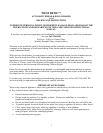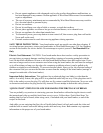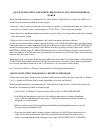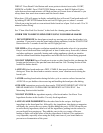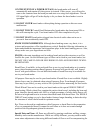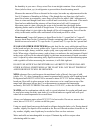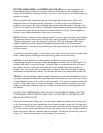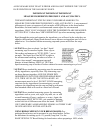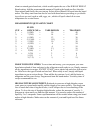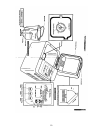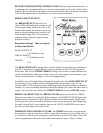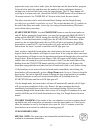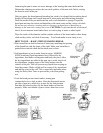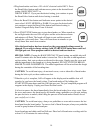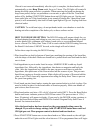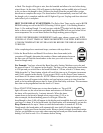7
BUTTER, MARGARINE and OTHER FATS AND OILS serve several purposes in
bread making as they tenderize the bread, add flavor and richness and contribute to the
storage life of bread by retaining moisture. An excess of fat, however, can inhibit rising, so
measure accurately.
Butter, margarine and solid shortening are interchangeable in the recipes. Butter and
margarine can be used right from the refrigerator. You may wish to cut cold butter or
margarine into 4 pieces for faster blending, placing them into the corners of the pan. Low-
fat or fat-free bread can be made by substituting equal amounts of unsweetened applesauce
or plain nonfat yogurt for the amount of fat recommended in a recipe. Watch dough as it
kneads for any minor adjustments, which may be necessary.
EGGS add color, richness and leavening to bread. Use large eggs. No premixing is needed.
Egg substitute can be used in place of fresh eggs. One egg equals ¼ cup of egg substitute.
To reduce cholesterol, you can substitute 2 egg whites for each large egg in the recipes
without affecting the result. Watch the dough during the knead cycle as some minor
adjustments may be necessary to get the dough to the right consistency. See Special Notes
on Flour section.
A special tip when using eggs is to run under warm water or place in a bowl of warm water
about 1 minute before cracking as this helps the egg slide out of shell better.
SALT has several functions in making bread. It inhibits the yeast growth while
strengthening the gluten structure to make the dough more elastic, plus it adds flavor. Use
ordinary table salt in your bread maker. Using too little or eliminating the salt will cause
the dough to over rise; using too much can prevent the dough from rising as high as it
should. “Lite” salt can be used as a substitute for ordinary table salt providing it contains
both potassium chloride and sodium. Use the same amount as recommended for table salt.
YEAST is a living organism, which through fermentation, feeds on carbohydrates in flour
and sugar to producer carbon dioxide gas that makes the bread rise. Active dry, fast rising
or bread machine yeast can be used in your bread maker. Use only the amount stated in the
recipes. Using a little more can cause the dough to over rise and bake into the cover. Fast
rising yeast and bread machine yeast are virtually the same and are interchangeable with
one another.
DO NOT USE COMPRESSED CAKE YEAST IN YOUR BREAD MAKER. RECIPES
IN THIS BOOK WERE TESTED USING ONLY ACTIVE DRY, FAST RISING AND
BREAD MACHINE YEAST.
Keep yeast stored in the refrigerator. You may find it handy to purchase yeast in glass jars
so you can measure the exact amount you need without having to waste any. If using yeast
packed in a ¼ -ounce foil envelope, it is best to open a fresh envelope every time you bake.
If you do save the unused amount from the open envelope, store in a dry, airtight container
in the refrigerator. Date the container and use promptly. Do not mix old and new yeast in a
recipe. A ¼ -ounce foil envelope of yeast contains 2¼ teaspoons.



